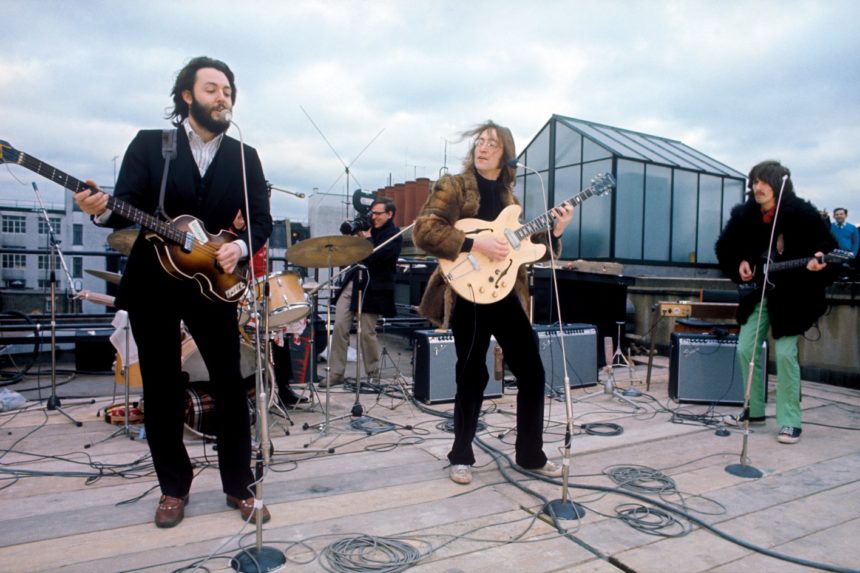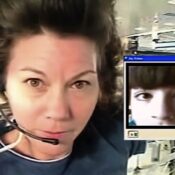The Beatles: Get Back
⭐⭐⭐
Run Time: Approx. 8 hours
Stars: John Lennon, Paul McCartney, George Harrison, Ringo Starr
Director: Peter Jackson
Is eight hours of Beatles too much Beatles? Even for the most die-hard Fab Four fan, it all depends on your affinity for bingeing.
It’s not often a critic will admit to not watching a movie all the way through, but here we go: Disney+, the cable network that is streaming The Beatles: Get Back, allotted just five days for critics to view all eight hours of Peter Jackson’s exhaustive three-part documentary.
I know, I know. Poor baby. Still, that’s a lot of Beatles coming through a pretty small bathroom window.
On the other hand, so rich is the source material that The Beatles: Get Back rewards even the most impatient viewer, who can needle-drop on any random point in the epic miniseries and land on something funny, ingenious, or sad.
And you never, ever have to wait more than a minute or two before the music starts.
In 1969, after a decade together, the Beatles were arguably the world’s top musical act. But they were at a crossroads. Since quitting live concerts three years earlier, the group’s landmark studio albums — Sgt. Pepper’s Lonely Hearts Club Band and The Beatles (the “White Album”) — had set new standards for recorded rock music. Still, a piece of John Lennon, Paul McCartney, George Harrison, and Ringo Starr longed for their good old club days, and they hit on a plan to recapture at least a shadow of that: They would set aside three weeks in January, 1969, to write an album’s worth of songs, then perform them live on TV.
To raise the stakes a bit, they would allow cameras to film them all the way through the creative process, from initial inspiration to final performance. The visual document would serve, in present-day terms, as “bonus materials.” As always, The Beatles were a few decades ahead of their time.
The lore surrounding the project is now well-known, most notably the notion that instead of capturing the lightning of Beatles creativity in a bottle, documentary filmmaker Michael Lindsay-Hogg’s cameras chronicled the acrimonious breakup of the group.
As a result, Beatles fans have always had a bad feeling about the resulting documentary, Let It Be (which despite an Oscar win never caught on at the box office), and the accompanying record album (the only Beatles record I ever saw in a cutout record bin). Why, the faithful asked, should we subject ourselves to witnessing the self-destruction of our favorite band?
Except that expectation was not true. Despite their clashes while making Let It Be, the Beatles stuck around long enough to make what, for many people’s money, was their most accomplished album, Abbey Road. In fact, as the film proves, several classic Abbey Road songs had their formative debuts during the Get Back sessions.
Virtually no one has seen Let It Be since the surviving Beatles pulled it from circulation back in the days of VHS tapes, so it’s hard to draw comparisons between Lindsay-Hogg’s 80-minute documentary and Jackson’s mammoth undertaking (anyone who tries to at this point is being tad disingenuous). I don’t have the same dark memories of the original; I recall being a bit put off by the blokes’ sniping, but anyone who grew up with brothers would recognize the dynamic — and occasional cruelty — of affection-tempered rivalry. I remember being thrilled by the rooftop finale, wishing only that there were more of it (and, as the new cut confirms, there was).
By my calculations, Jackson puts on screen some 15 percent of Lindsay-Hogg’s original footage — a preposterously high ratio by filmmaking standards. While the much-shorter first film, of necessity, focused on the recording sessions’ Big Moments (subject to approval by the band, of course), a liberated Jackson has the luxury of finding quiet interludes that, in retrospect, tell big stories about where The Beatles were heading.
Chatting in a corner during a break, George Harrison confides to John Lennon that, because he only gets to contribute two songs max to each Beatles album, he could stop writing at that moment and still have enough finished songs for a decade of Beatles releases.
He’d actually like to record his own album, he says. And John — who is already recording separately with his future wife Yoko Ono — enthusiastically agrees. Together they sketch out a future where the individual Beatles pursue solo careers while occasionally reuniting to work together. For the die-hard Beatles fan, it’s a glimpse at an alternate history that’s almost too painful to think about.
In its most striking moments, The Beatles: Get Back accomplishes, triumphantly, the group’s initial intent of capturing the creative process. About halfway through part one, the viewer becomes something of a voyeur through the lens of a lone camera, mounted in the rafters of the studio in which The Beatles are working. Directly below, Paul is strumming furiously on a guitar, changing chords with abandon while humming, hollering, and at times seemingly singing in tongues. It’s as if Paul, trance-like, is acting as a medium for a song that’s fighting to get out. George, sitting across from him, picks up his guitar and begins to tentatively play along, watching Paul’s hands on the frets, deciphering where this new inspiration is heading. Ringo ascends to his drum kit and, never taking his eyes from his bandmates, finds a beat in the frenzy of chords and strum patterns.
About a minute into all this, the chord progression takes shape. We begin to discern the words Paul is forming: “Get back…get back…” Then more unshaped sounds as the embryonic lyric falls away.
Finally, John walks into view. He’s late (“as usual,” one of his bandmates notes a few minutes earlier). In one motion he takes his seat next to Paul, readies his guitar, regards what Paul and George are up to — and seamlessly joins in.
The song has a way to go before it can walk, but Get Back has just been born.
Does The Beatles: Get Back really require eight hours to do its job? As we know from his Lord of the Rings trilogy, for all his talents Peter Jackson is not the master of efficient good-byes. It’s possible that a more accessible, easily digestible version of Get Back may lie somewhere between this one and the 2 1/2-hour version Jackson prepared for theatrical release last year (it has been reported that his favorite cut, heaven help us, ran 18 hours).
Maybe we don’t need to see so much of Paul’s 8-year-old daughter Heather dancing, fidgeting, and grabbing the microphone as if this were a Take Our Daughters to Work Day gone wild. And, yes, we get it, Yoko Ono was as omnipresent as the paint on the studio walls. And while Paul may well have felt the group needed a 14th take of Get Back, do we really need to stick around for that, especially since we can’t tell the difference because we’re not, like, musical geniuses?
I highly recommend sampling The Beatles: Get Back like I did. To paraphrase an old New York Times ad: You don’t have to watch it all, but it’s nice to know it’s all there.
Featured image: Scene from The Beatles: Get Back (Ethan A. Russell / © Apple Corps Ltd.)
Become a Saturday Evening Post member and enjoy unlimited access. Subscribe now



